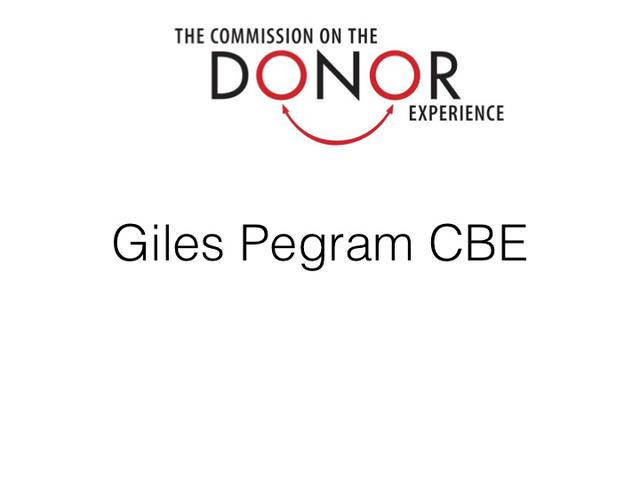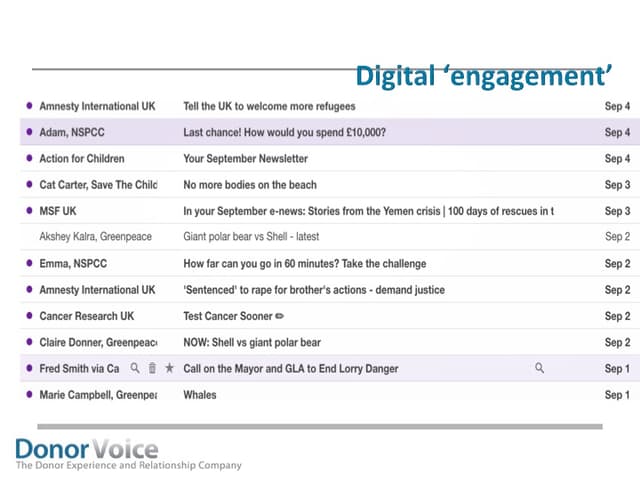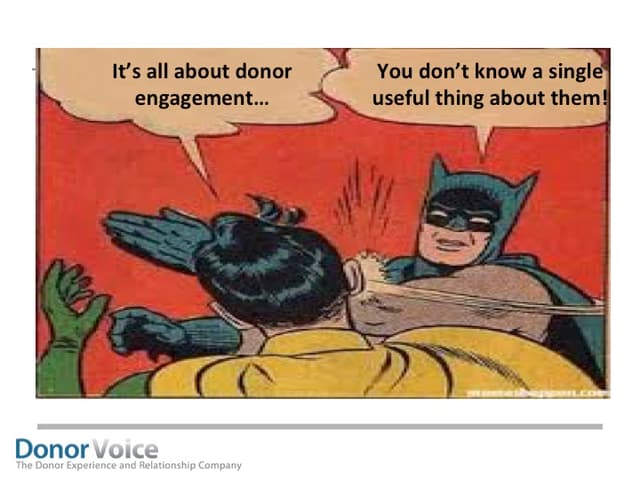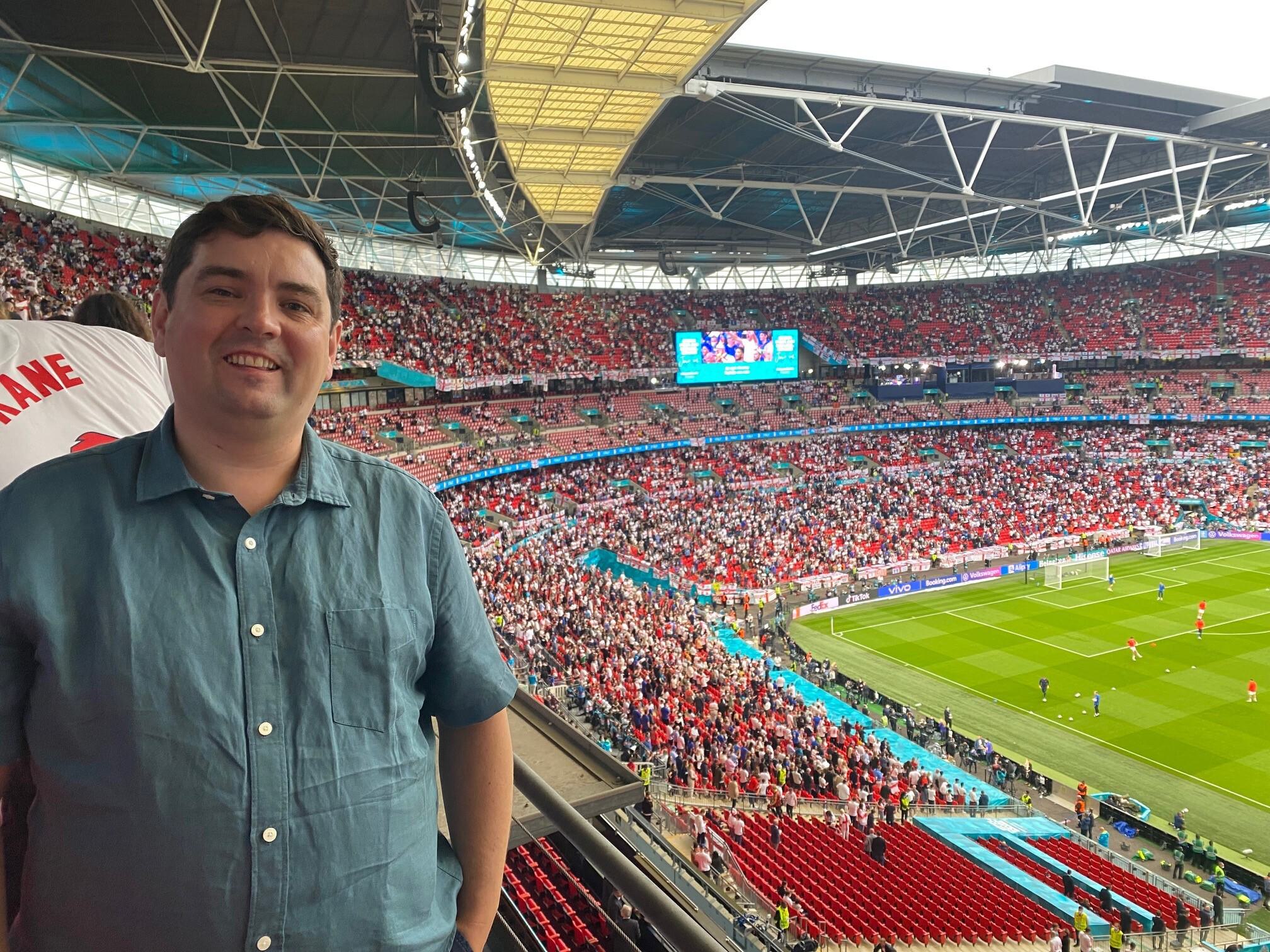Relationship fundraising ignite, part 2
- Written by
- Craig Linton
- Added
- August 10, 2016
1. Giles Pegram CBE is a fundraising consultant and board member of the Commission on the Donor Experience

Fundraising started with a need. A number of people recognised it and wanted to do something about it. They knew this would involve them giving money. So charities were formed.
Fundraising has always been about connecting donors with the cause. Fifty years ago, volunteers created activities to help them do that: flag days, house-to-house collections and events. They weren’t necessarily very efficient. But they involved donors and volunteers as passionate advocates.
Then charities began to employ paid fundraisers. They would co-ordinate the volunteers and create even more opportunities for donors to be connected to the cause. Happily, there are many charities that still operate in this way.
Unfortunately, there are many others for which things started to go wrong.
First, fundraising became a technique.
The charity was now at the centre
It did good work. It needed money. So it employed fundraisers to raise the money. They would organise activities.
Many fundraising departments became smooth, slick operations. Fundraising became an activity to raise money for the charity, not a vehicle to connect donor and cause. At the same time, there was a shift from long-term to short-term thinking.Fundraisers began fundraising at people.
Even though relationships with donors should be long term, fundraisers started to be judged by monthly performance against budget.
So what would have been the impact on the donor? What would she say had been the effect of ‘technique’ and ‘short termism’ on her?
She would have said that she felt she was on a conveyor belt. She was bombarded. Giving was no longer a pleasure – that had been replaced by a feeling of ‘not being able to do enough’.
The donor had been lost.
And so the inevitable happened. Charities needed more money. Pressure was put on fundraisers to raise more money. They put pressure on donors. Ask, ask more, ask more and more often.
The fundraising edifice collapsed.
There was a crisis of confidence. And in the summer of 2015 in the UK, much-respected charities suffered severe reputational damage.
How to put things right?
There needs to be a cultural shift. It will need to run through everything that we do. Trustees, CEOs and appeals directors will need to see the world through the eyes of the donor.
And so the Commission on the Donor Experience was born.
The Commission’s objective is to increase both funds raised and donor satisfaction by appealing to the feelings, thoughts and desires of donors as well as emphasising the needs of the charity.
Our aim is to transform fundraising, to change the culture to a truly consistent, donor-based approach to the business of raising money.
A donor should feel better after each communication than she did before. This is the key.
We have 12 commissioners, 25 projects with project owners and contributors and a small army of enthusiastic volunteers. And a full-time director leading the volunteer team.
We intend to launch the result early next year. And make a lot of noise.
Then, actually making the difference will take years
But – and there’s always a ‘but’
Will a donor give more in her lifetime if she consistently has a brilliant experience? Or if she just responds to repeated requests for money?
Surely it’s a no-brainer?
2. Charlie Hulme is managing director of DonorVoice in the UK
A definition of ‘relationship fundraising’, an explanation of why it’s impossible and how you can start doing it
Why is it so hard to get a consensus on what relationship fundraising is and how to practise it? ‘Fundraising’ means ‘raising funds’ and ‘relationship’ means connection. Simple right?
Trouble is the economic engine of volume, that every charity runs on, ignores ‘connection’. It assigns enormous value to who, when, what and how they gave. But knows absolutely nothing about why they gave.
Large, aggressive charities dismiss ‘why’ as an irrelevance. They’d be far larger, and wouldn’t need to be aggressive if they didn’t, but try telling them that.
Supposedly ‘donor-centric’ charities are worse. Their contact strategy is equally relentless; the only difference is they patronisingly presume to know ‘why’ – without asking the donor.
To establish and build a relationship you must answer three questions:
1. Why did they give?
What part of self are they expressing through giving?
Have they experienced the disease you’re trying to cure? Are they a parent, pet owner, etc? We don’t know, so everyone gets one-size-fits-all communications ranging from irrelevant to insensitive. But we call it ‘donor-centric’ because we used pronouns.
2. How was their experience of giving?
Fifty per cent of their decision to stay or go has nothing to do with cause, brand, fundraising, etc. It’s tied to their interaction in the moment. An interaction charities ignore.
So the donor with a connection who had a lousy experience gets the identical follow up as the donor with no connection who had a great one. But we call it ‘donor-centric’ because we have a donor services team (granted that ‘team’ works in a windowless cubicle in the basement and we make it incredibly difficult to contact them).
3. What do they want from us?
What are their preferences? Do all the ‘experiences’ we put in front of donors drive value? And of those that do, are some more important than others?
We know nothing about them, so we tell them everything about us. But we call it ‘donor-centric’ because we’re ‘educating’ them.
There are simple, scientific answers to all three questions (you won’t get them from Survey Monkey or, worse, a creative agency). Ask them, properly, act on them and you’re a relationship fundraiser. Ignore them and you’re a well-intentioned spammer.
3. Sonya Trivedy is the fundraising director at Terrence Higgins Trust – the UK’s leading HIV and sexual health charity
Sonya explained the challenges Terence Higgins Trust is currently facing – statutory funding cuts, greater competition, changes to government policy. These all mean fundraising is more important than ever.
Sonya then gave three examples of how they are using relationship fundraising to approach these challenges. She also explained how decisions made today can have impact long into the future. Finally, Sonya ended by sharing this quote from Wales manager, Chris Coleman:
‘Four year ago I was as far away from this as you could imagine. I’ve had more failures than successes but I’m not afraid to fail. We deserve this.’
She urged fundraisers not to be afraid to fail: ‘Relationship fundraising is easier in some areas than others but we need to keep asking for feedback, keep listening and keep responding in the best possible way. It’s not always going to be easy and from time to time we may fail but we need to keep going.’
Here, in Sonya’s own words, are the three examples she shared in her talks:
Example 1
One of our donors came to us via an advert he’d seen for one of our events. He attended, obviously enjoyed it and started coming to lots more. With events it can be easier to have those deeper conversations. Whenever we can we really take the time to get to know our donors and their motivations, with events that can happen much quicker.
After some really positive feedback from our donor, we asked him to be part of our auction committee. He’s been an absolutely brilliant ambassador for us, securing high profile art lots, introducing lots of major donors to our programme and, more recently, when we were pitching for a high profile corporate partnership, where he works, he was able to give us lots of valuable insight to help us win that pitch.
So basically, that’s him putting his reputation on the line by introducing us, believing that we’ll treat all his connections with respect because he trusts us. But that’s because we ask for his feedback, we listen and we respond; if we don’t respond in the way he’s suggested we tell him why.
Example 2
In January at Terrence Higgins Trust we sent a letter asking all our individual giving donors how they like to be communicated with. We offered them the chance to opt-in for telephone and email communication. We also gave them a chance to give us feedback. There were some great results. We’d really engaged our donors, we received some lovely messages and some good results for opt-in for email.
But it was concerning that the majority of people opted out of phone calls. This is our most valuable stream for conversions, upgrades, legacies and of course a more personable approach when we rarely get to see our individual giving donors face to face.
But we can’t be deterred by this. We need to keep thinking about new ways to engage so we can inspire action. So whilst there were some worrying results from our mailing, we must always remember that the external environment is constantly changing. How people are responding is a key consideration in our test, learn, refine, roll-out approach.
Of course, we must always continue to gather insight and tell a compelling story and really engage our donors to take action and make a difference. What’s absolutely crucial is we continually look for opportunities to place the donor at the centre of our work.
Example 3
We’re currently preparing a business case for our board for a new middle donor programme. The key part of this is the number of ways supporters can engage with us – from choosing to receive letters to attending events.
This will give our donors much more choice and we hope to be able to really respond to their needs and motivations. Of course this is going to be much easier to do as it’s a new programme set up with the donor at the centre.





















